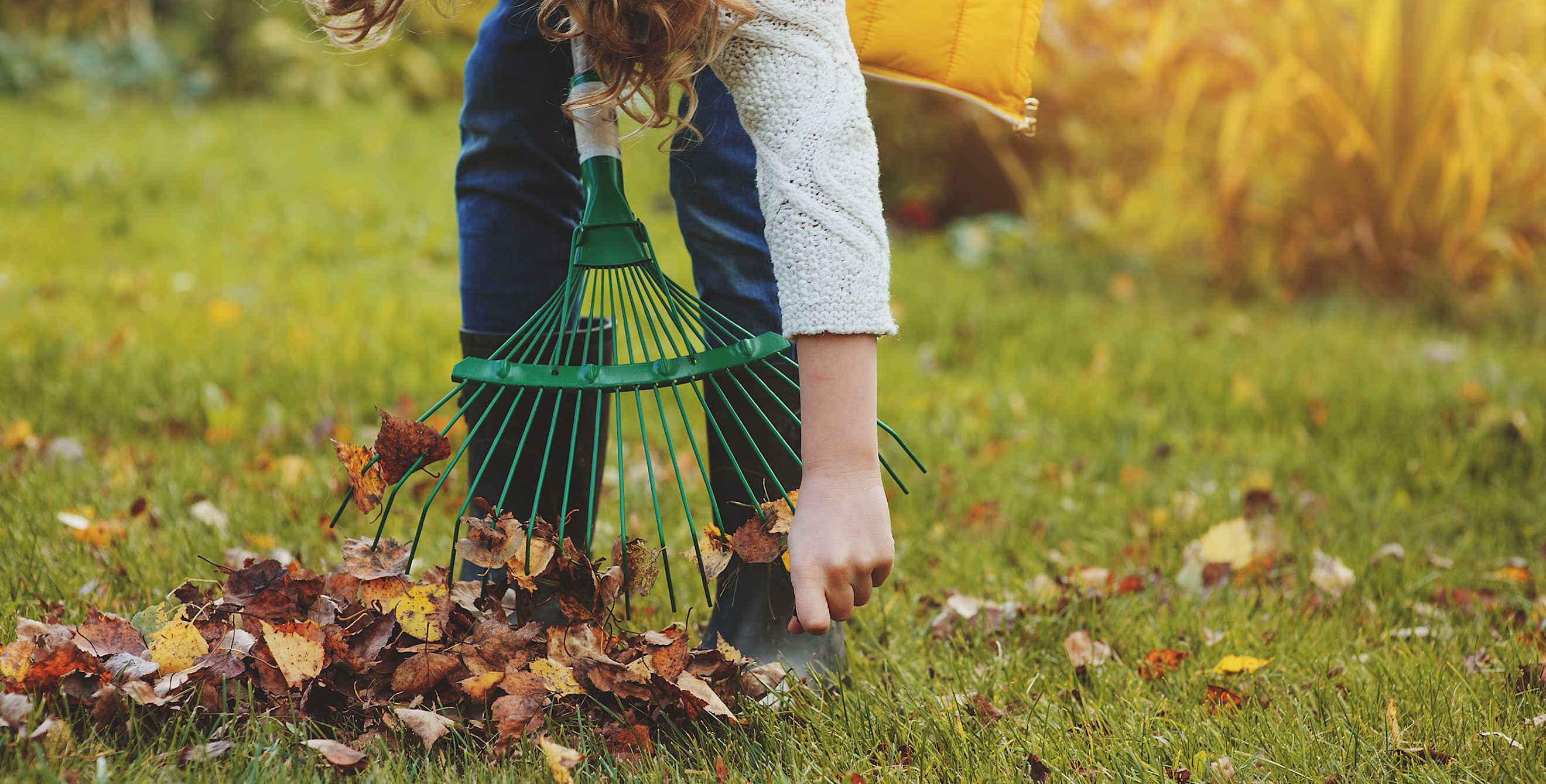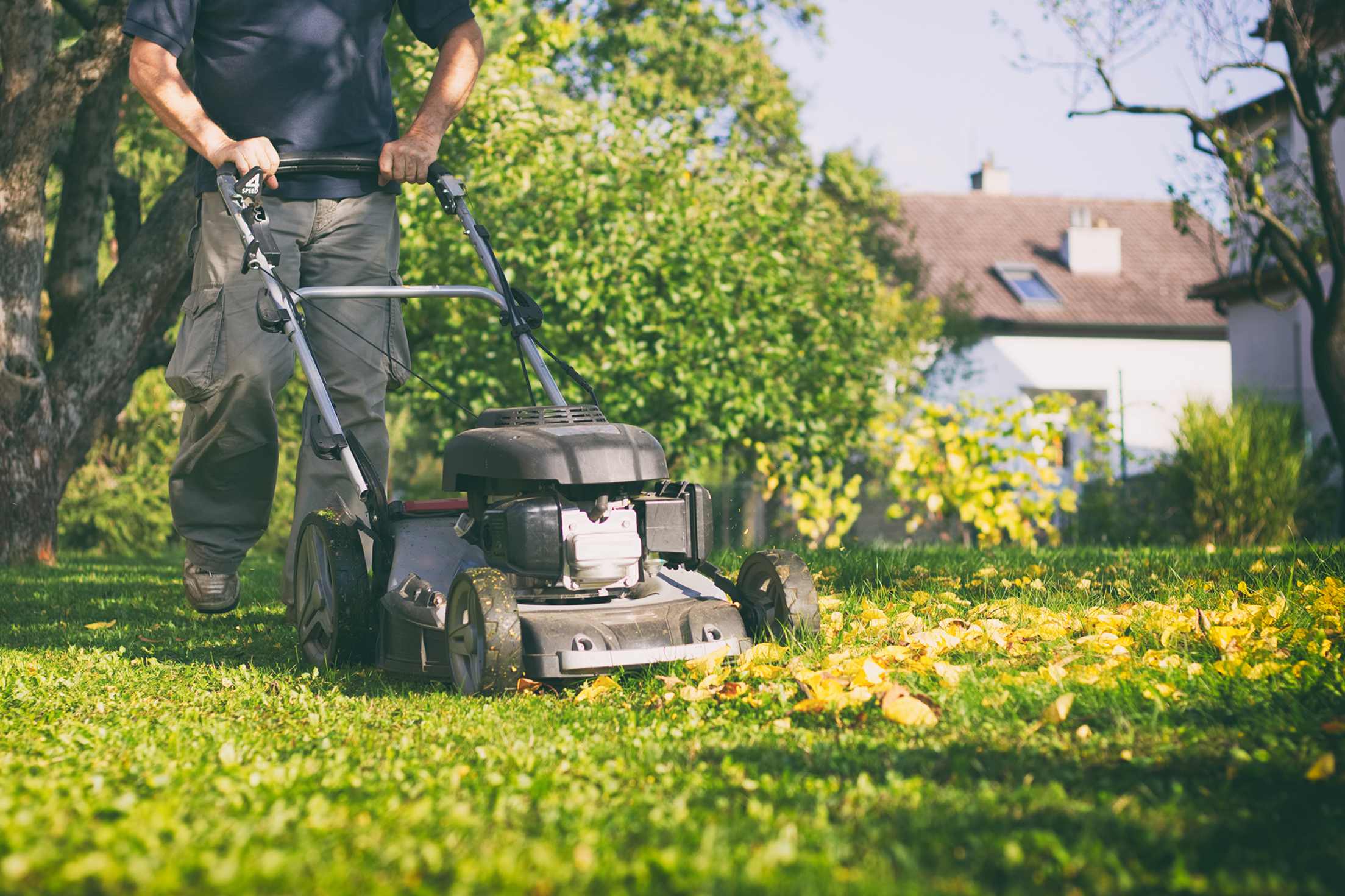
How to Prepare Your Garden for Winter
These essential tasks will help your plants weather the cold and flourish next year.

Whether you live in an arid or coastal climate, it’s time to prepare your garden for winter’s chill.
“Prepping is important now so you can accomplish several tasks before the ground freezes,” says Hattie Braun, Coconino County Director of the University of Arizona Cooperative Extension. Tackling these top to-dos will help your garden weather the colder days ahead so it can flourish in the springtime.

Water thoroughly.
You’ll want to hit your garden with a good dose of hydration at the end of fall. That’s particularly important for newly planted trees, shrubs, and perennials, says Sandi Blake, co-owner of Montana’s Blake Nursery. “This will help hydrate thirsty roots if precipitation is meager during the winter months,” Blake says.
The goal is for the water to soak deep into the soil: Aim for three feet for trees, two feet for shrubs, and a foot deep for your perennial plants, says Jacqueline A. Soule, a gardening expert and author of 13 books, including Month-by-Month Garden Guide for Arizona, Nevada, and New Mexico. A soil probe—available online or at a gardening store—will help you know if the water has penetrated deeply enough. A slow overnight drip from the hose is a good way to ensure your garden gets the water it needs, Soule says.
This deep watering will provide plants and trees with the energy required to survive the winter months, she says. In particular, says Soule, pines and evergreens can have a hard time if they get dehydrated. Any tree that stays green during the wintertime—such as citrus trees in Phoenix or palm trees in Las Vegas—should also get a thorough watering, she says.
Once winter hits, you may still need to water—but less frequently than during summer and spring. When temperatures are above freezing, try watering trees monthly and add more frequent irrigation for the rest of the garden based on your plants’ needs.
Mulch with care.
Once your plants are watered, you can add mulch—it’s helpful for perennials, trees, rose bushes, and shrubs, according to Soule. “They’ll survive winter better with a layer of mulch on top,” she says. By adding mulch, you’ll help regulate soil temperature and moisture levels, as well as add organic matter to the soil, says Braun.
Just make sure to mulch properly: “Pull mulch away from the base of your plants so it isn’t touching the stem or trunk. When mulch gets wet and is in contact with the plant, it can promote rot and disease,” says Missy Gable, horticulturalist and statewide director of the UC Master Gardener Program.

Mow the lawn.
Plan to give your lawn one last mow for the year in October or so, Soule says. You’ll want to time this before the first freeze. Doing this will help the grass grow back evenly in the springtime, she says.
Stop pruning and fertilizing.
Gardeners can often feel tempted to prune during the fall—after all, it feels like the organized step to take before winding down for winter. Hold off, Soule cautions.
Here’s why: By pruning, you’re sending plants, trees, and so on a signal to bloom. That’s the wrong message, since you want plants to be able to go dormant over the wintertime.
Similarly, now is not the time to fertilize, says Soule. This too works against the goal of allowing plants and bushes to go dormant.

Add organic matter or plant cover crops in empty beds.
Sometimes, spring warming arrives late, Braun notes. That’s why it’s helpful to add organic matter to vegetable gardens before snow or freezing temperatures, she says. Prepping your soil in fall means you’ll be ready in springtime to start your vegetable garden without delay. “This will lead to a good, productive soil that can hold water and nutrients,” Braun says.
Old Farmer’s Almanac recommends laying a thin layer of leaves or other organic matter on top of small beds.
Cover crops are another option, particularly on larger beds or in vegetable gardens. “The best one is buckwheat,” Soule says. “Plant it now, and it’ll grow even if there’s a frost. In the spring, it flowers early, and the bees love it for making honey.”
Smart Tip: No freezing temperatures in your area? Skip the cover crops, Soule says—instead, put in a winter garden. “In some parts of the country, you can grow cool season vegetables through the winter,” Gable points out. Through early fall, you can plant sturdy vegetables such as beets, carrots, kale, cauliflower, and broccoli in temperate climates, including the Bay Area.

Winterize your irrigation systems.
If you have a watering system and you live in an area that freezes, you’ll need to winterize the system before temperatures dip—that way, it won’t freeze and crack, Soule says.
Start by making sure everything is working properly: You’ll want to check for leaks or broken nozzles and make any necessary repairs and replacements. If you get freezing temperatures, shut off the water supply and call in a certified irrigation professional to blow out any remaining water in the lines with an air compressor.
If you have hoses in use, let them drain and dry before storing them.
Pull out all the weeds.
You’ll want to tackle weeds now—don’t push this task off till next year. “Perennial weeds are very difficult to control,” Braun says. Digging them out now can help reduce their spread next season.
Now’s also a good time to remove any diseased plants, just don’t compost them. They should be placed in landfill waste so you don’t spread disease through the compost.

Plant spring bulbs.
Give yourself something to look forward to next year by planting bulbs that bloom in spring, such as daffodils, tulips, and hyacinths.
“October is the ideal time to plant spring bulbs in Montana,” says Blake. “However, if you don’t get around to it in October, don’t worry. November is not too late.”
These bulbs will be the first thing to flower in your garden, with some arriving as early as February. The key is to get them in the ground before the first freeze. “Everyone should plant spring flowering bulbs,” Soule says.
Leave some mess.
Tidy up too much in your garden, and it won’t be a haven for birds and insects, according to the National Audubon Society.
“To keep the birds coming, I do things like leave spent coneflower blooms through the fall and chase squirrels away from my Washington hawthorn tree so they don’t eat all the berries,” Gable says. Putting out hummingbird feeders or leaving spent flowers full of seeds intact can also attract birds.
Prepping your garden for winter often entails removing all fallen leaves and redistributing mulch so it evenly covers the ground, Gable says, but this can eliminate nesting habits for bees.
So what’s a gardener to do? “I try to find my own personal balance of tidying up the garden for winter while also maintaining a space for native bees that has bare ground, sand piles, or unraked leaves,” Gable says.
Clean and store your tools.
Before you stash tools away in the shed or elsewhere, spend some time preparing and rejuvenating them. If you have any equipment that runs on gas—like a lawnmower—run it dry before storing it, Soule says. That’ll preserve the carburetor so it doesn’t get gummed up with old gas. Alternately, add fuel stabilizer per the manufacturer's instructions. Make sure to also change the oil. For electric tools, disconnect any batteries before putting them away for the season.
“It’s always good to clean your tools,” she says. You can use mineral or olive oil on handles of tools. You’ll also want to oil the wheelbarrow axle and the metal on shovels and other digging tools to help prevent rusting, Soule says.
Take stock—and plan ahead.
Sure, there’s a lot to do before winter settles in. But it’s also a good time to pause and think about all you’ve accomplished.
“Fall is the ideal time to take stock of your dedication and hard work during the spring, summer, and fall growing season,” Blake says. “Give yourself a pat on the back, relax, and appreciate your good fortune [...to be] outdoors and connected to nature and amazing plants,” she says.
And, of course, you can also begin to think ahead to the next growing season.
“I always encourage people to take the time to plan and mentally map out their spring garden. This creative activity may keep us from getting the winter garden blues,” Gable says.